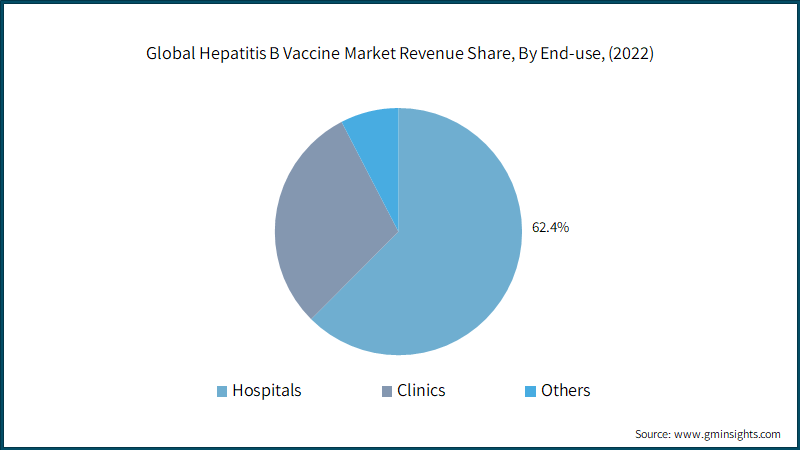Home > Healthcare > Pharmaceuticals > Vaccines > Hepatitis B Vaccine Market
Hepatitis B Vaccine Market Analysis
- Report ID: GMI5826
- Published Date: May 2023
- Report Format: PDF
Hepatitis B Vaccine Market Analysis
By type, the hepatitis B vaccine market is classified into single antigen vaccine and combination vaccine. The combination vaccine segment accounted over 65% of the market share in 2022 and is projected to witness robust growth over the analysis timeframe. Hepatitis B combination vaccines are formulated to provide protection against multiple diseases in a single shot, reducing the number of injections required for immunization. Also, combination hepatitis B vaccine is the combination of hepatitis B vaccine with other relevant antigens, such as those for diphtheria, tetanus, pertussis, other infections. These vaccines offer convenience, increased compliance, and improved vaccination coverage rates.

Based on end-use, the hepatitis B vaccine market is segmented into hospitals, clinics and others. The hospitals are projected to register USD 3.6 billion in 2032. This is owing to the primary vaccination dose administration to new-borns infants before the discharge from the hospitals as new-born infants are at a high risk of acquiring hepatitis B infection. Also, hospitals offer accessibility and convenience for individuals seeking hepatitis B vaccination during their regular visits for healthcare needs. Furthermore, developed infrastructure and well-established storage facilities contributes to streamlined operations and reduces the risk of vaccine shortage and wastage in the hospital.

North America hepatitis B vaccine market accounted for over 40.6% business share in 2022 and is anticipated to grow at considerable growth rate during the forecast timeframe. Increasing prevalence of hepatitis B infections coupled with the increasing population at risk, including newborns, healthcare workers among others is expected to fuel the market growth in the region. Also, growing awareness pertaining to the importance of immunization and preventive healthcare practices is projected to fuel the market demand.
Increasing investments in R&D to enhance vaccine efficacy will reduce the number of doses required, hereby significantly proliferate the market growth. Furthermore, rising government initiatives for promoting education and vaccination campaigns to enhance vaccine coverage rates will significantly drive the value in the North America region.

